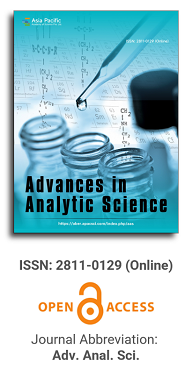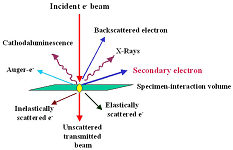
Asia Pacific Academy of Science Pte. Ltd. (APACSCI) specializes in international journal publishing. APACSCI adopts the open access publishing model and provides an important communication bridge for academic groups whose interest fields include engineering, technology, medicine, computer, mathematics, agriculture and forestry, and environment.

Applied Chemical Engineering in crime laboratory
Vol 2, Issue 1, 2021
Download PDF
Abstract
The career of Chemical Engineering presents among the areas studied several analytical techniques in common within the laboratory field with the field of criminalistics, these techniques are used for the detection of foreign components within samples of biological and non-biological origin that alter the behavior of an individual or end with the death of the same, the results are analyzed by comparison with established patterns that allow to give a reliable interpretation to be presented to a judge. The objective of this study is to collect information to determine the areas within the criminalistic and forensic field where a chemical engineer can be of support, taking advantage of his knowledge in the different analytical techniques and helping in the interpretation of the results of these, thus allowing to contribute to the legal procedures that are carried out in the cases presented before the law.
Keywords
References
- Valiente Barderas A. The chemical engineer: what does he do, 1st ed. Alhambra; 1980.
- Valiente Barderas A, Galdeano Bienzobas C. Spatial skills and competencies in Chemical Engineering. Educacion Quimica. 2014; 25(2): 154-158. doi: 10.1016/s0187-893x(14)70539-7
- Hernández de la Torre R. Criminalistics in questions and answers. Available online: https://es.scribd.com/read/403976024/La-criminalistica-en-quesas-y-respuestas (accessed on 29 August 2020).
- SNMLCF. Criminalistics Service (Spanish). Available online: https://www.cienciasforenses.gob.ec/servicios-de- criminalistica/ (accessed on 29 August 2020).
- Reyes Atuesta S. Forensic Chemistry in Criminal Investigation (Portuguese). Available online: https://semillerocif.com/wp-content/uploads/2017/1 0/El-Rol-Del-Quimico-Forense-En-La-Investigacio n- Criminal.pdf (accessed on 29 August 2020).
- Roque C. The Forensic Toxicology. Revista de Ciencias Forenses de Honduras. 2016; 2.
- Drummer OH. Forensic toxicology. EXS. 2010; 100: 579-603. doi: 10.1007/978-3-7643-8338-1_18
- Valdebenito Zenteno G, Báez Contreras M. Forensic Chemistry: Analytical Chemistry Applied to Criminology. Springer. 2016.
- Murillo Castaño J, Vanegas Chaparro P. Laboratory criminalistics: forensic toxicology. Universidad La Gran Colombia; 2015.
- Barajas H, García-Hinojosa C, Salas Cruz V. Forensic Toxicology. Springer. 2020.
- Martínez González MA. Criterios cuantitativos en toxicología forense. Revista Española de Medicina Legal. 2014; 40(1): 30-38. doi: 10.1016/j.reml.2013.03.002
- Cambres Jiménez JJ, Castillo C. Forensic ballistics as a fundamental tool for the identification of the firearm used in a punishable act [Universidad de Carabobo]. Available online: http://riuc.bc.uc.edu.ve/handle/123456789/4720 (accessed on 29 August 2020).
- Torres Sierra N, Medina Marulanda F. The importance of ballistics and forensic chemistry in the attainment of information for the creation of the theory of a case [Universidad La GranColombia]. Available online: http://repository.ugc.edu.co/handle/11396/4923 (accessed on 29 August 2020).
- Bautista Hernández A, Larico Laura I. Determination of Firearm Gunshot Residues by Atomic Absorption Spectrophotometry. Rev Mex Med Forense. 2018; 3(1): 40-48.
- Meneses J, Contreras R. Cylindrically Symmetric 3-D Optical Measurement Device: Applications in Ballistics. Revista Bistua. 2009; 7: 1-10.
- Miquelarena A. The implications of elastomers in forensic ballistics. Skopein Magazine. 2019; 20(7).
- Valdebenito Zenteno G, Báez Contreras M. Hair: does it hide secrets for forensic science? Springer. 2007.
- Oliviera Gordo J. Hair as a biological sample in forensic toxicology: collection, analysis and areas of application (Portuguese). Available online: https://bdigital.ufp.pt/handle/10284/3987 (accessed on 29 August 2020).
- Jaramillo Quiroz AE. Methods for the identification of human bite marks. Available online: http://repositorio.ug.edu.ec/handle/redug/40412 (accessed on 29 August 2020).
- Alvarez Seguí M. Cosmetic advances and criminalistics: The cheiloscopy of fingerprints generated by permanent lipsticks. Springer. 1999. 120.
- Aparicio EG. Colorimetric techniques. Criminological-criminalistic view. 2017; 18-23.
- Castellanos Sainz J. Forensic Hematology. Available online: www.mexicoforense.org (accessed on 29 August 2020).
- Gandur Torrado C. Qualitative analysis of cocaine, heroin and morphine by gas chromatography coupled to mass spectrometry (GC/MS). Colombia Forense. 2016; 1(3): 15-23. doi: 10.16925/cf.v1i3.1384
Supporting Agencies
Copyright (c) 2021 Priscila M. Hidalgo

This work is licensed under a Creative Commons Attribution 4.0 International License.

This site is licensed under a Creative Commons Attribution 4.0 International License (CC BY 4.0).
1.jpg)
Prof. Sivanesan Subramanian
Anna University, India





.jpg)
